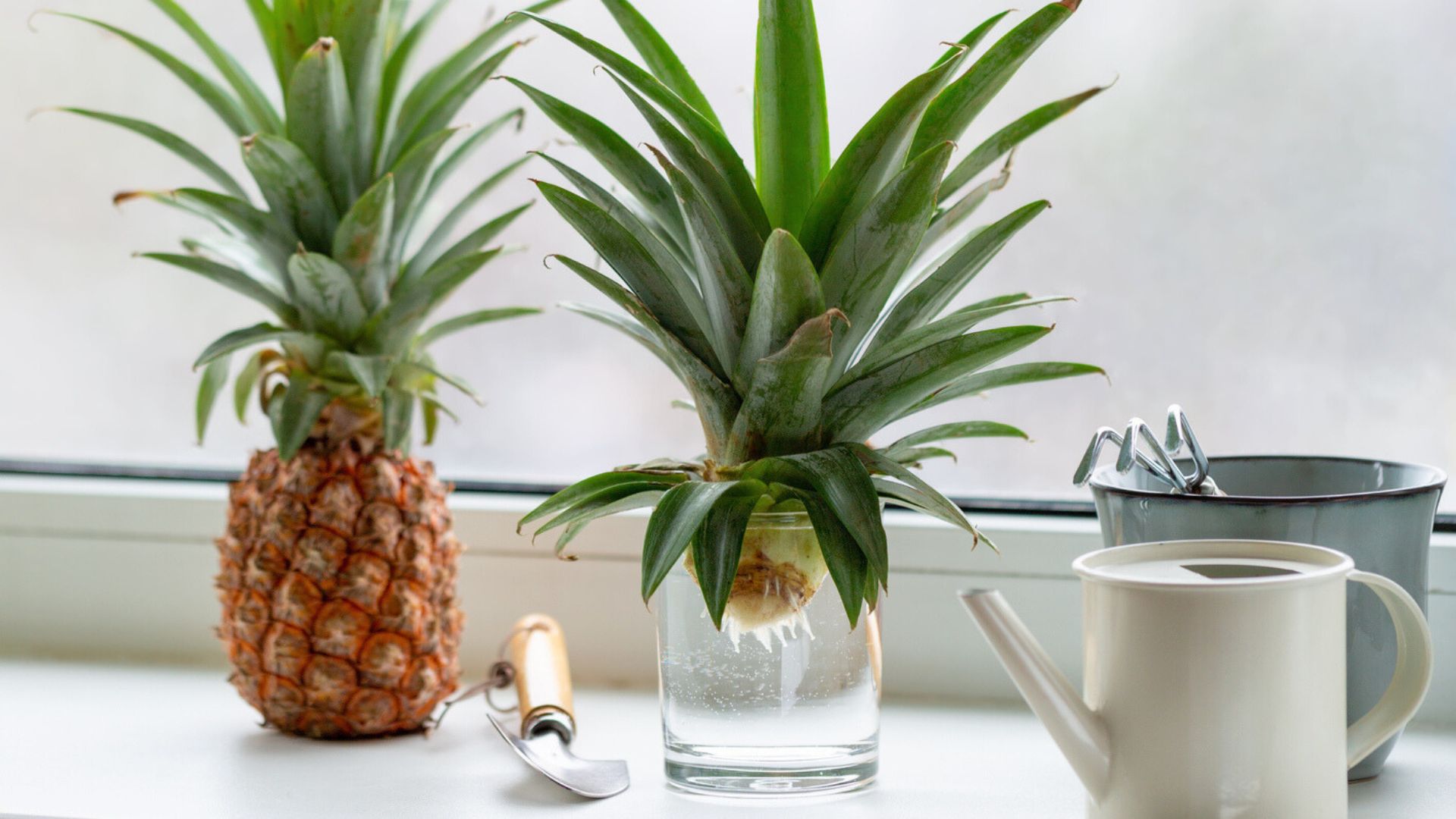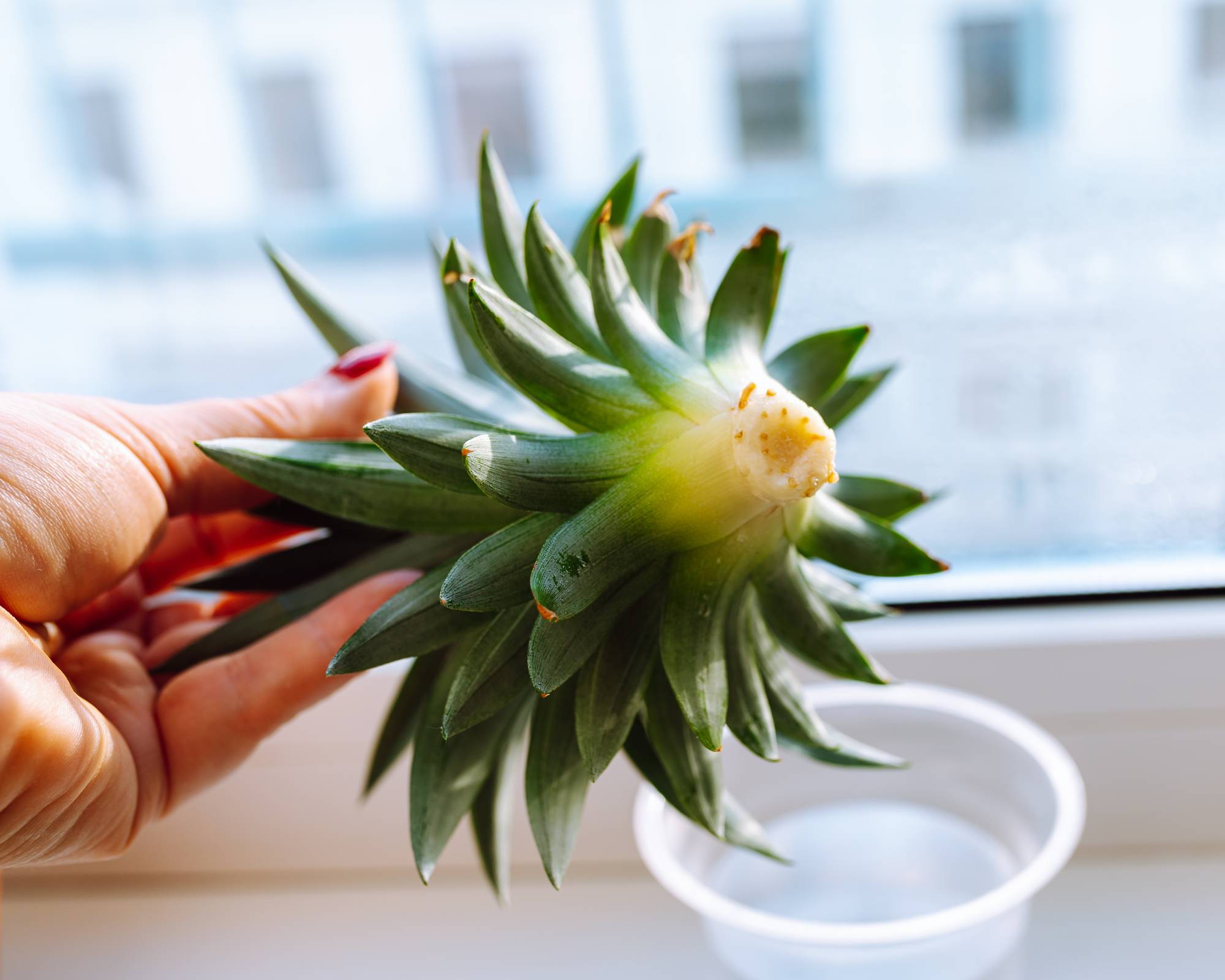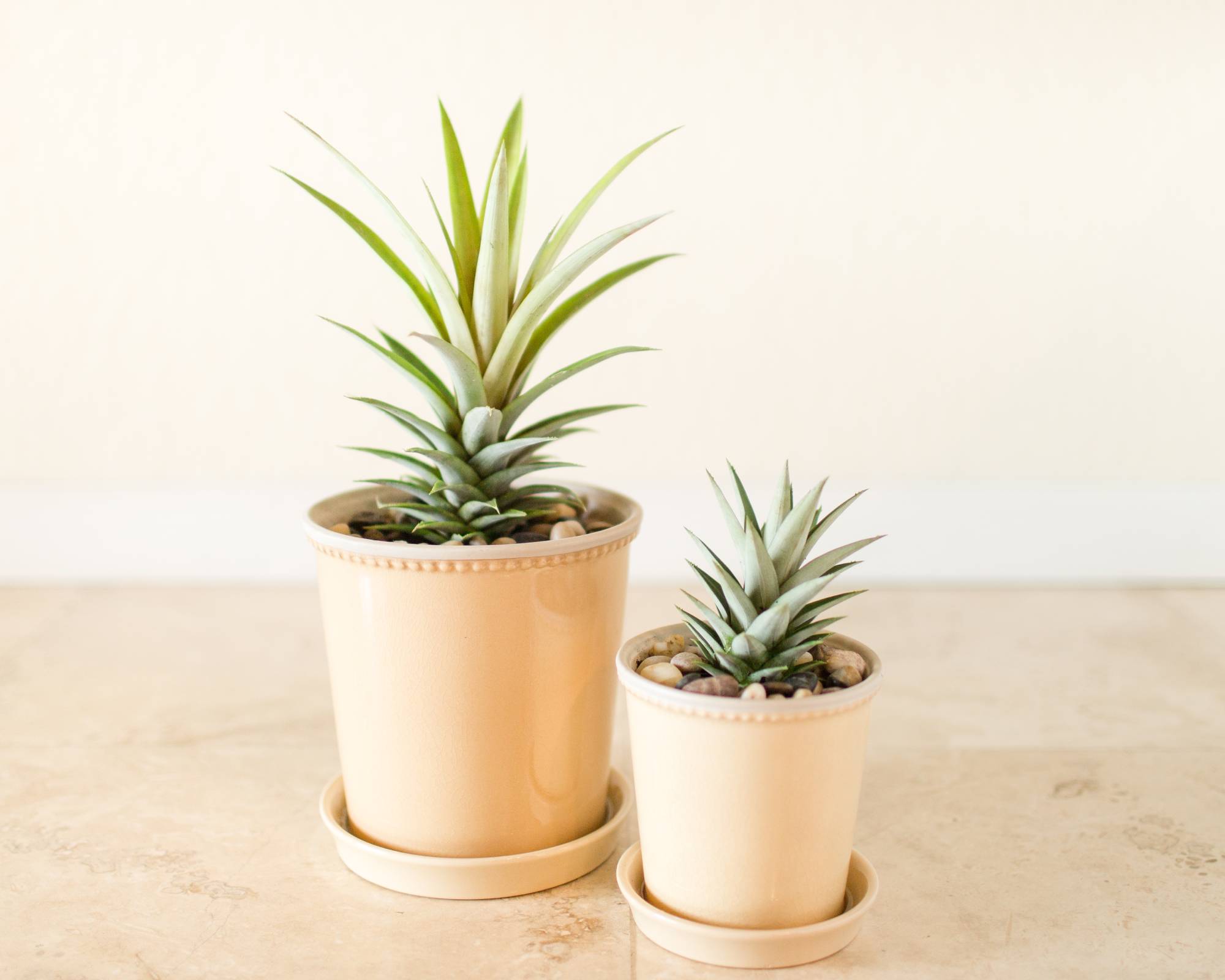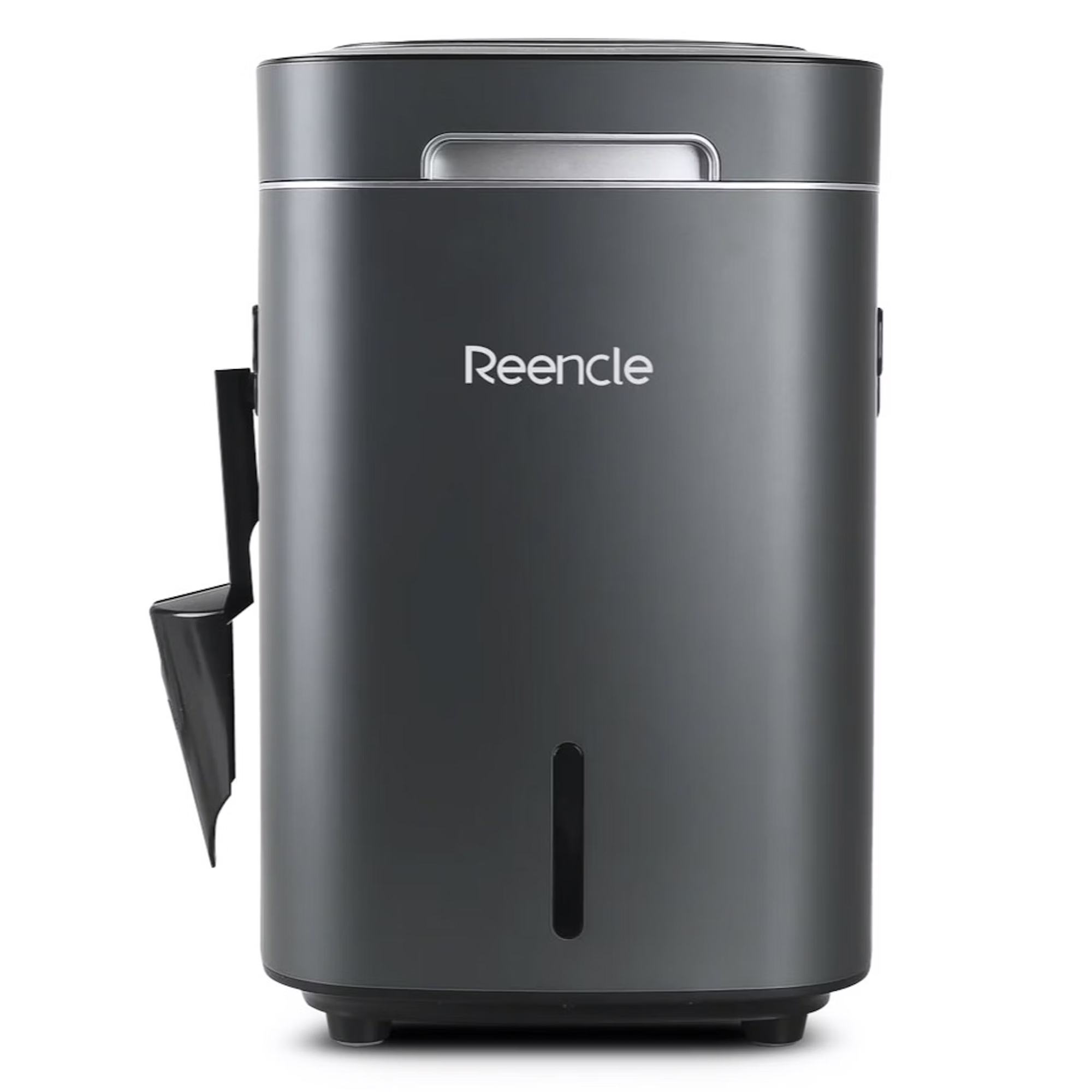How To Grow A Pineapple Top From Store-Bought Fruit – For A Tasty Tropical Houseplant
Did you know you can grow a pineapple plant in your very own home—no tropical travel required? Here's how to grow a pineapple top from a store-bought fruit.


Nikki Tilley
It’s one of the best memories of childhood—learning how to grow a pineapple top—but there’s no rule that forbids you from doing it as an adult. Planting a pineapple top and watching it grow turns the magic of nature from an abstract idea into reality. Plus, you end up with a cute pineapple plant.
The leafy tops of store-bought pineapples are easy to root and grow in your home as a pretty houseplant. Simply choose a fresh pineapple from your local grocery store, cut the top off, and sprout your plant. Pick one with attractive, or even variegated, foliage for a unique pineapple plant you can enjoy year-round.
Not sure how to get started growing pineapples from tops? Don’t worry. We’ll walk you through everything you need to know in this article. And yes, in the right climate your pineapple houseplant may actually produce fruit!
Can You Grow a Pineapple From a Top?
Regrowing kitchen scraps is a fun and sustainable way to garden indoors, and pineapples are one of the easiest plants to start with. It is entirely possible, no matter where you live, to grow the top of a pineapple into a little plant. In the right climate, the little pineapple tree will grow, mature, establish, and send out a flowering stalk. The resulting fruit will be a pineapple, grown from the top of another pineapple.
How to Plant a Pineapple Top
Here are the steps you want to take to start growing the top of a pineapple:
- Buy a large, fresh pineapple. It’s ideal if you can find one locally grown at a farmer’s market, but failing that, get one at your grocery store.
- Slice off the leafy top of the fruit, making the cut 1 inch (2.5 cm) below the bottom of the leaves. Prune the pineapple top to remove the outer and the lower leaves. Trim off the outer portion of the pineapple top at the bottom of the crown, or stem, until you see root buds. These should resemble small, brown-colored bumps around the stem's perimeter.

- Set the section that remains—the tough, stringy core attached to the leaves—in a warm, dry area for a few days to keep it from rotting.
- Although it's possible to sprout a pineapple in water, most people have better luck rooting them in soil. Fill a large container with a potting medium that drains well. Soil mixed with perlite or coarse sand works great. Moisten your potting medium, plant the base of the pineapple top, and water well. When the potting mix drains, cover the plant with a clear plastic bag. Seal it up to keep the humidity in, then place the pot in bright indirect light.
- Keep your pineapple top moist until roots develop. If it dries out, add more water. It should take about 6 to 8 weeks for roots to establish. Allow your pineapple top to grow a strong root system before you transplant it.
- Remove the plastic bag and take the rooted pineapple top out of the pot. Replant it in a large pot filled with moist, well-draining potting mix. Keep in mind that the plant can be up to 3 or 4 feet (1 to 1.3 m) tall when it matures, so pick a container that will accommodate the growing plant.

How to Grow a Pineapple Top
Your job now is to make certain that the potting soil remains moist. Water it regularly but not enough to make it soggy. Fertilize your new pineapple plant using a water-soluble fertilizer every four weeks during the spring and summer, and every eight weeks during the fall and winter.
Keep your eye on the pineapple plant as it grows. It will quickly outgrow its container, so have a larger one waiting. Unless you live in a tropical region similar to where pineapples originate, keep the plant indoors during winter.
Sign up for the Gardening Know How newsletter today and receive a free copy of our e-book "How to Grow Delicious Tomatoes".
Your pineapple plant may enjoy some time outside in the summer. Move the plant outdoors to a semi-shaded location throughout late spring and summer. However, be sure to move it back inside before the first frost in fall for overwintering.
How Long Does It Take to Grow a Pineapple?
When can you hope for fruit from your propagated pineapple top? Pineapples are slow-growing plants, so do not expect to see blooms or fruit for at least two to three years, if at all. It is possible, however, to encourage the flowering of mature plants and harvest pineapple fruits from propagated plants.
Laying the plant on its side between watering is thought to promote the flower-inducing production of ethylene. You can also place the pineapple in a plastic bag with an apple for several days. Apples are well known for giving off ethylene gas.With any luck, flowering should take place within two to three months. First the flower will fade, then it will produce fruit.
More Fun Ways to Propagate Produce
- Explore more edible plants you can propagate with ease. Here are the 8 best vegetables to propagate from cuttings.
- Start a garden with a quick trip to the grocery store. After planting your pineapple top, learn how to keep grocery store herbs thriving indoors.
- Grow a windowsill bursting with fresh veggies this winter! A top gardening pro shares her secrets for a successful winter windowsill garden.
- Discover expert-curated indoor gardening tools and products to improve your growing game in the Gardening Know How Shop.
This article features products available from third party vendors on the Gardening Know How Shop.

Teo Spengler is a master gardener and a docent at the San Francisco Botanical Garden, where she hosts public tours. She has studied horticulture and written about nature, trees, plants, and gardening for more than two decades. Her extended family includes some 30 houseplants and hundreds of outdoor plants, including 250 trees, which are her main passion. Spengler currently splits her life between San Francisco and the French Basque Country, though she was raised in Alaska, giving her experience of gardening in a range of climates.
- Nikki TilleySenior Editor
